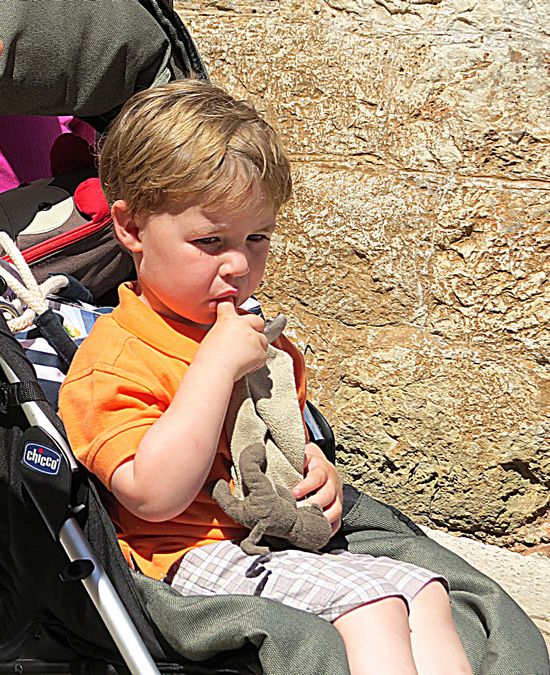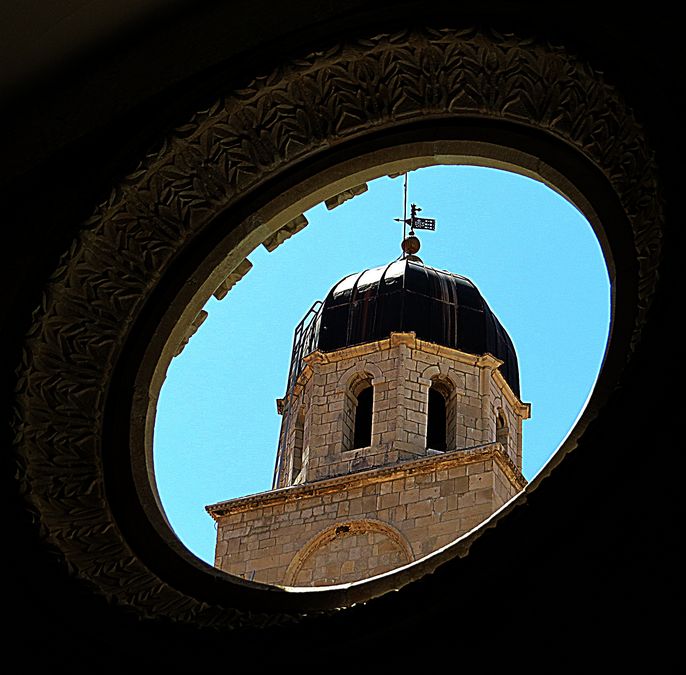Crossroads of the Adriatic Tour
Albania, Croatia, Montenegro, Bosnia and Herzegovina, and Slovenia
May 23 - June 12, 2015
Part Two - Croatia
Croatia is at the crossroads of Central Europe, SE Europe, and the Mediterranean.
Croatia’s Adriatic Sea coast contains more than a 1000 islands. It borders the Adriatic Sea between Bosnia & Herzegovina & Slovenia.
The population is about 4.5 million, mostly Croats, with the most common religious denomination being Roman Catholicism (86%).
The Croats arrived in the area of present-day Croatia during the early part of the 7th century AD. It was part of the Austro-Hungarian
Empire until the end of WWI. In 1918, the Croats, Serbs, and Slovenes formed a kingdom, known after 1919, as Yugoslovia. After
World War II, it became a Communist state under control of Marshal Tito. In June 1991, Croatia declared its independence
from Yugoslavia. Four years of bitter fighting followed before occupying Serb armies were mostly cleared from Croatia.
Under UN supervision,
the last Serb held area was returned to Croatia in 1998. Today Croatia is a presidential/parliamentary
democracy and a
member of the European Union and NATO. Tourism is a significant source of revenue during the summer,
with Croatia ranked the 18th most popular tourist destination in the world.
Croatia provides a universal health care system and free primary and secondary education.
Page Four - Dubrovnik, Croatia
Dubrovnik is on the Adriatic Sea and is a prominent tourist destination, including regular visits from large cruise ships.
It is on the UNESCO list of world heritage sites. The prosperity of the city was historically based on maritime trade.
It achieved a high level of development, particularly during the 15th and 16th centuries, as it became notable for its wealth.
Although it was demilitarized in the 1970s to protect it from war, in 1991, after the breakup of Yugoslavia, it was besieged for 7 months
by Serb and Montenegrin
soldiers gathered in the Yugoslav People’s Army (JNA) and suffered significant damage from shelling,
including the historic old town surrounded by a medieval wall. When the JNA attacked the city, the new Croatian government
quickly set up a makeshift military with an outpost in the city itself. Montenegro, allied with Slobodan Milosevic
in Serbia, declared that Dubrovnik would not remain in Croatia because it claimed that historically it had never been part of Croatia,
despite the large Croat majority in the city and the fact that few Montenegrins lived there, and Serbs accounted for less than 7% of the
population. The artillery attacks on Dubrovnik damaged 56% of its buildings, and the historic walled city sustained 650 hits
by artillery rounds. The Croatian Army managed to lift the siege in May 1992, though the danger of sudden attacks by the JNA lasted
for another 3 years.
After the end of the war, the damage caused by the shelling of the Old Town was repaired in the original style,
adhering to UNESCO guidelines. There are still some signs of the war damage, however.

We arrived late afternoon in Dubrovnik after our drive from Albania.
Sunset May 28, 2015 from Valamar Argosy Hotel in Dubrovnik



Pile Gate (west entrance to Old Town Dubrovnik). Dubrovnik began as a Roman settlement.

View from Pile Gate of part of the medieval wall surrounding the Old
Town. We walked atop the medieval wall, which runs 1.25 miles around
the perimeter of Old Town and offers ever changing views of terracotta
rooftops and the Adriatic Sea. In places the walls are up to 18 ft. thick and
82 ft. high.

St. Blaise - the patron saint of the city of Dubrovnik, holding a model
of the City of Dubrovnik in his left hand. Statue is on wall at Pile Gate

Child in stroller on way inside the walled Old Town

When you enter Old Town through the Pile Gate, one of the first
things you see on the Stradun (the main pedestrian road) is the Great Onofrio Fountain. Construction
began in 1438 to bring drinking water into town via aqueduct from the mountains. This domed
fountain is rimmed by 16 carved stone heads that spout water from their mouths.

Church of St. Savior with steps up to the top of the medieval
wall to the left, near the Pile Gate entrance. This church was built
to thank God after Dubrovnik made it through a 1520 earthquake. When
a massive earthquake in 1667 destroyed the city, this church was one of
the only buildings left intact. You can see the faint pockmarks from shrapnel
when the city was attacked in the 1990s.

View down the main street of Old Town, the Stradun, looking toward
the Bell Tower.

The Bell Tower and Clock

Franciscan Monastery Museum, which has one of Europe's oldest
continuing pharmacies. The bell tower of the Franciscan Church with
its rounded top is integrated into the structure of the building.

Inside Franciscan Monastery Museum
The Franciscan monks opened a pharmacy in the monastery
in 1317, and it has been in operation ever since.

View of Franciscan Church bell tower from inside the monastery museum

Running at right angles from the Stradun (main street) are numerous
small pedestrian streets and alleys.

St. Blaise Church at Luza Square with Orlando's Column in front.
This column is carved with the figure of a medieval knight holding
a sword and shield. Dating from the 15th century, it is regarded as a
symbol of the freedom of Dubrovnik. Legend has it that the knight is
Orlando, who allegedly helped liberate Dubrovnik when it was attacked
by pirates in the 9th century. St. Blaise Church is dedicated to the city's patron
saint and
was built in
Baroque style between 1706 and 1714.

Dubrovnik Cathedral - built in the late 17th century in Baroque style.

Rector's Palace on the right; St. Blaise Church on the left.
When Dubrovnik was a city-state, the chief citizen was the rector. In
the 13th century, local govt. would meet in his palace. The upper floor
now has Dubrovnik's Cultural History Museum.

Bell Tower in the background on the right and Sponza Palace in the middle in
the back.

Stray cat resting in a shoe box

Croatian flag
Link to Page Five - Dubrovnik, Croatia continued
Pat's Home Page